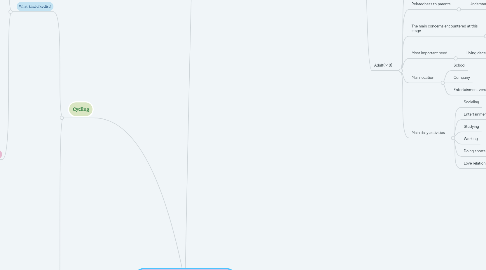
1. Cycling
1.1. What kind of cyclist?
1.1.1. Amateur
1.1.1.1. Needs
1.1.1.1.1. Listening to music
1.1.1.1.2. Contact parents and friends
1.1.1.1.3. Positioning
1.1.1.1.4. Map navigation
1.1.1.1.5. Cycling record
1.1.1.1.6. Data of body index
1.1.1.1.7. Alarm system
1.1.1.1.8. Medical care
1.1.2. Professional
1.1.2.1. Needs
1.1.2.1.1. Professional guidance
1.1.2.1.2. Map navigation
1.1.2.1.3. Exchange experience with other cyclists
1.1.2.1.4. Data of body index
1.1.2.1.5. Cycling record
1.1.2.1.6. Medical care
1.1.2.1.7. Alarm system
1.1.2.1.8. List of Bicycle Records
1.2. Cycling related services
1.2.1. Cycling apps
1.2.1.1. Brompton
1.2.1.1.1. Video:Brompton – An IoT sensor platform for smarter city cycling apps
1.2.1.2. IBM Watson
1.2.1.2.1. Video:Team USA Cycling secret advantage - Watson IoT Platform
1.2.2. Cycle repair
1.2.2.1. Article:Top 5 (DIY) bicycle maintenance tips for beginners
1.2.2.2. Website:Halfords
1.2.3. Bicycle Doctor
1.2.3.1. Website:Bike Doctor
1.2.4. Bike fit
1.2.4.1. Websites
1.2.4.1.1. Bike Fit
1.2.4.1.2. Bike Fitting
2. Experience
2.1. What kind of experience can be used here?
2.1.1. Types of experience
2.1.1.1. Physical
2.1.1.1.1. Occurs whenever an object or environment changes
2.1.1.2. Mental
2.1.1.2.1. Sport psychology
2.1.1.3. Social
2.1.1.3.1. Skills and habits necessary for participating within their own societies
2.1.1.4. Virtual
2.1.1.4.1. VR
3. Families
3.1. Parents
3.1.1. What is the age?
3.1.1.1. The middle aged(40-60)
3.1.1.1.1. Characteristics
3.1.1.1.2. Relatedness to children
3.1.1.1.3. The main concerns encountered at this stage
3.1.1.1.4. Most important need
3.1.1.1.5. Main location
3.1.1.1.6. Main daily activities
3.1.1.2. The elder(>60)
3.1.1.2.1. Characteristics
3.1.1.2.2. Relatedness to children
3.1.1.2.3. The main concerns encountered at this stage
3.1.1.2.4. Most important need
3.1.1.2.5. Main location
3.1.1.2.6. Main daily activities
3.2. Children
3.2.1. What is the age?
3.2.1.1. Infant/baby(0-1)
3.2.1.1.1. Characteristics
3.2.1.1.2. Relatedness to parents
3.2.1.1.3. Main location
3.2.1.1.4. Main daily activities
3.2.1.2. Toddler(1-3)
3.2.1.2.1. Characteristics
3.2.1.2.2. Relatedness to parents
3.2.1.2.3. Most important need
3.2.1.2.4. Main location
3.2.1.2.5. Main daily activities
3.2.1.3. Preschooler(3-5)
3.2.1.3.1. Characteristics
3.2.1.3.2. Relatedness to parents
3.2.1.3.3. Main location
3.2.1.3.4. Main daily activities
3.2.1.4. School children(6-12)
3.2.1.4.1. Characteristics
3.2.1.4.2. Relatedness to parents
3.2.1.4.3. Most important need
3.2.1.4.4. Main location
3.2.1.4.5. Main daily activities
3.2.1.5. Teenager(13-18)
3.2.1.5.1. Characteristics
3.2.1.5.2. Relatedness to parents
3.2.1.5.3. The main concerns encountered at this stage
3.2.1.5.4. Most important need
3.2.1.5.5. Main location
3.2.1.5.6. Main daily activities
3.2.1.6. Adult(>18)
3.2.1.6.1. Characteristics
3.2.1.6.2. Relatedness to parents
3.2.1.6.3. The main concerns encountered at this stage
3.2.1.6.4. Most important need
3.2.1.6.5. Main location
3.2.1.6.6. Main daily activities
4. Internet of Things
4.1. What is the Internet of Things?
4.1.1. Wikipedia
4.1.2. Video:How It Works: Internet of Things
4.1.2.1. CNET:help you find the right smart home gear to keep your home more comfortable, more convenient, and more secure.
4.2. Applications
4.2.1. Consumer applications
4.2.1.1. Smart home
4.2.1.1.1. Article:The Best Smart Home Devices for 2019
4.2.1.1.2. related app
4.2.1.2. Elder care
4.2.1.2.1. Website
4.2.2. Commercial application
4.2.2.1. Medical and healthcare
4.2.2.1.1. Benefits
4.2.2.1.2. Related articles
4.2.2.2. Transportation
4.2.2.2.1. Benefits
4.2.2.2.2. Transportation systems
4.2.2.2.3. Related articles:Top 5 Use Cases of IoT in Transportation
4.2.2.2.4. Related video:The Connected Car and The Future of Transportation
4.2.2.3. V2X communications
4.2.2.3.1. First step to autonomous driving and connected road infrastructure
4.2.2.4. Building and home automation
4.2.2.4.1. Main areas
4.2.3. Industrial applications
4.2.3.1. Manufacturing
4.2.3.1.1. Integration of various manufacturing devices
4.2.3.1.2. Characteristcs
4.2.3.2. Agriculture
4.2.3.2.1. Collecting data
4.2.3.2.2. Benefits
4.2.3.2.3. Microsoft:Azure
4.2.4. Infrastructure applications
4.2.4.1. Metropolitan scale deployments
4.2.4.1.1. Smart city
4.2.4.2. Energy management
4.2.4.2.1. Energy-consuming devices
4.2.4.3. Environmental monitoring
4.2.4.3.1. The integration of smart devices in the built environment and how they might to know how to be used in future applications
4.2.4.3.2. Use sensors to assist in environmental protection
4.2.4.3.3. App:Particle
4.2.5. Military Applications
4.2.5.1. Internet of Battlefield Things
4.2.5.1.1. Enhance the capabilities of Army soldiers
4.2.5.2. Ocean of Things
4.2.5.2.1. Establish an Internet of Things across large ocean areas
4.3. Trends
4.3.1. Explosive growth of devices connected and controlled by the Internet
4.4. Elements
4.4.1. Connectivity
4.4.2. "Things"
4.4.3. Data
4.4.4. Communication
4.4.5. Intelligence and action
4.4.6. Automation
4.4.7. Ecosystem
4.5. Enabling technologies for IoT
4.5.1. Big data
4.5.2. Digital twin
4.5.3. Cloud computing
4.5.4. Sensors
4.5.5. Communications
4.5.6. Analytics software
4.5.7. Edge devices
4.6. Criticism, problems and controversies
4.6.1. Platform fragmentation
4.6.2. Privacy, autonomy, and control
4.6.3. Data storage
4.6.4. Security
4.6.5. Safety
4.6.6. Design
4.6.7. Environmental sustainability impact
4.6.8. Intentional obsolescence of devices
4.6.9. Confusing terminology
4.7. IoT adoption barriers
4.7.1. Lack of interoperability and unclear value propositions
4.7.2. Privacy and security concerns
4.7.3. Traditional governance structures
4.7.4. Business planning and models

